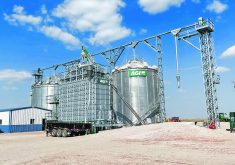WINNIPEG — Many economists fear that agricultural productivity has slumped into a long-term trend of disappointingly slow growth, while others think recent weather shocks have temporarily disguised a better growth trend that will reappear once better growing conditions return.
Still others warn that decades of reduced agricultural research growth will continue for years unless funding is boosted.
New research from University of British Columbia agricultural economist James Vercammen argues that there is no underlying productivity growth trend at all, but instead revolutionary technological innovations that take years to be adopted and then unpredictably appear.
Read Also

Using artificial intelligence in agriculture starts with the right data
Good data is critical as the agriculture sector increasingly adopts new AI technology to drive efficiency, sustainability and trust across all levels of the value chain.
“I argue that neither perspective is accurate since agricultural total factor productivity (TFP) is best modelled as a random walk with drift and thus not governed by a deterministic trend line,” writes Vercammen in a recent paper published in the Canadian Journal of Agricultural Economics.
Basically, he suggests that the appearance of steady trends of productivity growth in American farming identified by the U.S. Department of Agriculture’s Economic Research Service, upon which some of his analysis is based, might be an illusion created by slow adoption of new technologies “by a heterogeneous set of farmers.”
In other words, a radical new technology is created, first adopters jump on it, they are followed by mainstream farmers, who are in turn followed by the late adopters years later.
This could create a false sense of steady productivity growth trends because production gains are spread across years of adoption rather than directly connected to release of the technology.
“If adoption was instantaneous, then the TFP schedule aggregated across all farmers would necessarily be stationary with a series of structural breaks,” writes Vercammen in one part of his discussion.
An extended period of adoption means that technology adoption delays are a possible explanation for the appearance of productivity growth trends.
Some economists argue that there has been a significant break in agricultural productivity growth trends that occurred about 30 years ago.
Vercammen disagrees and provides his own modelling that shows the random appearance of new technologies doesn’t fit well with assumptions of long-term productivity growth trends.
However, he shares the concerns of people across the agricultural research world that increases in agricultural productivity growth, either through a steady trend or sudden leaps, could stall. The world relies upon farmers being able to produce more food for a growing global population.
















